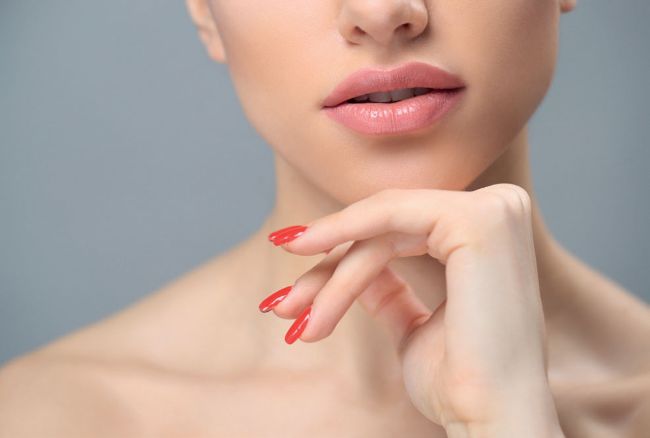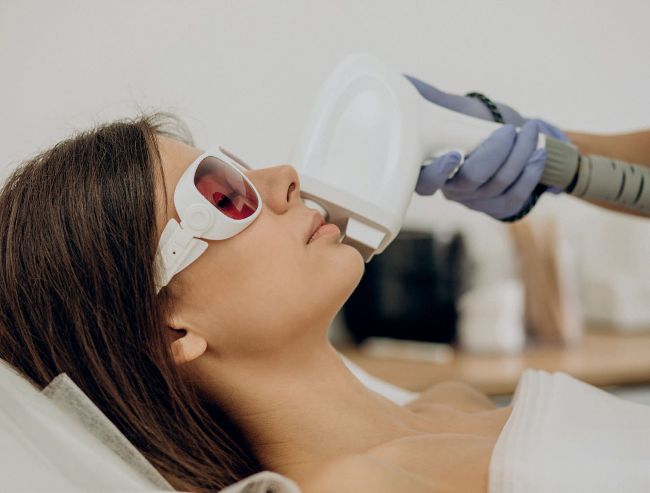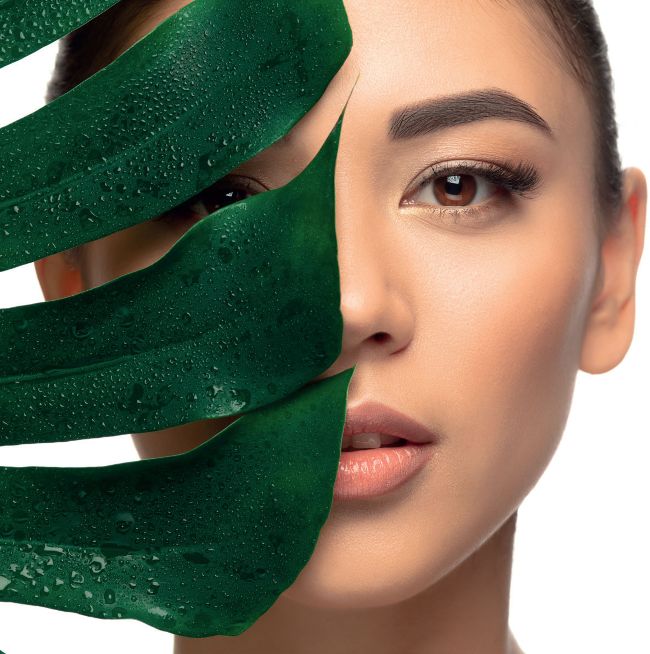INDUSTRY NEWS
New investments in the New Year
In its most recent public announcement, BlackSoil announced its first investment of Rs 10 crore in Sreyas Holistic. Sreyas Holistic Remedies operates a chain of dermatologist clinics under the brand name of Oliva. They offer skin and hair care products and treatments.
Currently, Sreyas Holistic operates 23 clinics in seven Indian cities. This investment will be used by the dermatologist clinic group for its working capital and general corporate purposes. Oliva, a Hyderabad-based startup, has already raised more than Rs 100 crore from India Life Sciences Fund, Entrust Family Office Investment Advisor and a few more. Blacksoil is a specialised credit platform focused on providing debt solutions to PE/VC backed growth companies – this is the firm’s sixth deal in the healthcare space. The BlackSoil-Sreyas Holisitc partnership is one to look out for in the future of the beauty industry.
Global alert! Cybercrime gets surgical
Here is something for the aesthetic industry across the world to be weary off – illegal theft of patient data, especially ‘before’ and ‘after’ pictures, among others. Making headlines in the UK in December last year were hackers stealing data of a large cosmetic surgery chain. It was reported that they were threatening to publish patients’ photographs. Well, in the new virtual world of consultations, owing to the pandemic, it is important to be far more cautious and ensure top-notch privacy to ensure data and patient privacy safety. As reported by a leading global media house, a chain of hospital and clinic facilities with several celebrity endorsements confirmed a ransomware attack in December 2020. The attack was announced on the ransomware group’s darknet webpage; they claimed to have obtained more than 900 gigabytes of patient photographs. The aesthetic facility in question, specialises in weight loss, and face and body cosmetic surgery; they said that their IT systems was subjected to a data security breach and even though none of the patients’ payment card details were compromised, some patients’ personal data may have been accessed by the hackers.

Virtual reality is leading to a rise in cosmetic surgeries
Reportedly, a recent study in the journal Facial Plastic Surgery and Aesthetic Medicine has stated that the lockdown has seen a significant increase in the number of plastic surgeries in the US. In a time where we do not upload or share pictures without filters, virtual meetings have worked as just another mirror. For some individuals, this has further affected their self-confidence and has caused anxiety about their digital appearance. A trending term in the new normal is Zoom Dysmorphia, a disorder that involves obsessive focus on a perceived flaw in body appearance. Reports reveal that this has led to record numbers in people opting for plastic surgery in the US. Further, reports mention that patients used selfies and an arsenal of photo editing apps to create filtered versions of themselves. According to secondary sources, people are critically analysing their features and are not as reluctant as before to spend on skincare products or visit a dermatologist. There have been several concerns on the double chin being visible in these virtual calls. There has been a significant increase in patients opting for cryolipolysis during the lockdown.

Cosmetic laser market sets it sights high
Mergers and acquisitions in the international cosmetic laser industry, along with other developments, have led to substantial growth in the industry over the past years and this trend is expected to continue, especially in the APAC region. Expansion of the medical tourism industry will positively impact growth of the cosmetic laser market. Countries such as India, Thailand, Brazil, Mexico, and Turkey have emerged as important centres for medical tourism. Cutting-edge technology, superior care, faster access to treatments, and lower prices are a few of the reasons for medical travel to these countries. The medical tourism industry has been growing at a rate of 15 to 25 per cent. Especially attractive rates for laser treatment in India have been a major driver for the cosmetic laser market in the country. Rise in awareness of skincare and a marked increase in disposable incomes are some of the factors boosting the industry. A rise in preference for minimally invasive cosmetic procedures will result in positive expansion opportunities for the cosmetic laser market in the coming years. In terms of revenue, the cosmetic laser market in Asia-Pacific is projected to expand at a CAGR of 14.1 per cent during the period leading up to 2026.

There’s a light at the end of the tunnel for skincare device manufacturers
As reported, the International Society of Aesthetic Plastic Surgery (ISAPS) has announced that in 2018 – 10,607,227 surgical cosmetic procedures were performed globally, and owing to this, the global skincare devices market is predicted to grow from $9,531.9 million in 2019 to $28,157.2 million by 2030; amounting to an impressive growth of 11 per cent CAGR from 2020 to 2030. The volume of non-surgical aesthetic procedures, such as calcium hydroxylapatite, botulinum toxin, poly-L-lactic acid, and hyaluronic acid treatments; non-surgical hyperventilation and skin tightening procedures, chemical peels, non-surgical fat reduction, and cellulite reduction, is also rising. In particular, the skincare devices market is being propelled by the rising demand for breast lift, neck lift, fat grafting (face), and brow lift procedures. COVID-19 has forced skincare device manufacturers to suspend manufacturing and sales operations, leading to low availability of these products. However, the skin tightening and body contouring market is expected to grow with the highest CAGR in the skincare devices market of 11.8 per cent, under segmentation by application, in the coming years. Dermatology clinics will continue dominating the skincare devices market in the immediate future and will subsequently have a growing requirement for skin treatment related devices.
India popular 10 for surgical and non-surgical procedures
According to various reports, among the top popular surgical procedures remain breast augmentation, liposuction, eyelid surgery, abdominoplasty, and rhinoplasty. The top nonsurgical procedures include botulinum toxin, hyaluronic acid, hair removal, nonsurgical fat reduction, and photo rejuvenation.
Recently, there has been a decrease in breast augmentation procedures, considering the 20.6 per cent increase over the past five years; this could be related to issues surrounding BIA-ALCL. However, surgery to remove implants increased by 10.7 per cent in 2019. Face and head procedures increased by 13.5 per cent, compared to a 14.7 per cent decrease in the previous year; and eyelid surgery increased in popularity among men. Buttock surgery recorded the highest growth for all surgical procedures. Finally, labiaplasty increased by 24.1 per cent in 2019.
On the other hand, nonsurgical injectables saw an increase 8.6 per cent and botulinum toxin remained the most used. The highest percentage increase was in the use of calcium hydroxyapatite, up 64.9 per cent in 2019. The use of hyaluronic acid also continued to rise and is up by 15.7 per cent since 2018. Poly-l-lactic acid and micro-ablative procedures also increased significantly by 24.1 per cent and 34.2 per cent, respectively.
NEWS IN BRIEF
Global skin graft market takes a bigger leap!
The global skin graft market is expected to grow at a CAGR of 7.6 per cent during the forecast period from 2018 to 2025. It is estimated to account US$ 1,371.9 million by 2025 as compared to US$ 770.5 million in 2017. Leaving no market behind, the global skin graft market has penetrated in the developing countries as well as developing economies. Skin grafting is a surgery involving the transplantation of skin using various types of skin graft.
Innovation through partnership
Mary Care Inc, a well-known brand in skincare, recently offered an educational grant to the International Master Course on Ageing Science (IMCAS) Academy to fund their webinar on “Office Peels and Home Peels”. This was available to plastic surgeons, dermatologists, industry specialist, and aesthetic practitioners, to assist them with continuing their education and improving their practice. The webinar, debuted worldwide to over 1,200 attendees, gave an overview of chemical peels.
Trends for cosmetic procedures in 2021
Jawline fillers are becoming the popular contender for top spot on the list of popular cosmetic procedures. Botulinum toxin is being largely used by younger clients as a preventive treatment. Alongside the jawline, an increasing number of patients want a change in the shape of their chin. Especially men are seeking fillers to get better definition between the outer mouth and chin. Semi-permanent make-up or cosmetic tattooing for eyebrows and lips is on the popular list. Liposuction and tummy tucks are also popular contenders. These body contouring procedures along with other nonsurgical treatments such a temperature-based fat reduction, skin tightening, and radiofrequency have widely increased in popularity and accessibility.
Skin tightening market revenue to skyrocket
Reports indicate that the increasing popularity for non-invasive skin tightening and lifting methods will accelerate the demand for skin tightening devices, leading to a huge revenue increase that will cross US$ 990 million by 2026. Growing awareness for the latest skincare technologies and the willingness to spend more on skincare has fueled the skin tightening markets’ growth, reveals a recent report by Global Market Insights, Inc. For a part, this is driven by social media trends, promotion of skin makeovers by celebrities, and the new culture of online work and socialising because of the pandemic. Devices responsible for this growth include laser skin tightening devices, the market for which is expected to witness a 10 per cent growth by 2026. Also, standalone portability devices facilitate treatments with greater accuracy as well as provide better results for patients, within the hour or less. The skin tightening market for the standalone portability segment was valued at US$ 350 million in 2019. A type of skin tightening device that is often used at home is the ultrasound, and this segment is estimated to achieve a CAGR of 12 per cent by 2026.

Light therapy market expected to exceed US$ 1 billion by 2025
As per the market research report, the light therapy market is expected to exceed $1 billion by 2025 with red light therapy treatment already witnessing a growth of over 4.5 per cent CAGR. The growing adoption of light therapy in various medical conditions will further accelerate the demand for these devices thereby augmenting business growth. Light therapy and red-light therapy are two completely different concepts, where the former deals with patients suffering from depression as the light resets the circadian rhythm by controlling the sleepwake cycle and later improves sleep efficiency by providing individuals maximum hours of sleep thus surging its demand among the population. Also, the increasing demand for non-invasive skin treatment like blue light therapy for treating several skin diseases such as acne vulgaris will favour the growth of the light therapy market. However, several side-effects of light therapy including headache and nausea may hamper industry growth in the future. Light visors segment, which accounted for around US$ 79 million, and dermatology clinics segment, which accounted for about US$ 210 million in 2018, is also expected to observe sharp growth by 2025.
COVID-19 vaccine side-effects in dermal filler patients
The American Society for Dermatologic Surgery (ASDS) has reportedly issued a new guidance regarding side-effects from the SARS-CoV-2 mRNA vaccine on dermal fillers. The guidance provides data from the US Food and Drug Administration (FDA) on reactions from the mRNA vaccine. It also shares information for both dermal practitioners and patients. Three participants out of 15,184 who received at least one dose of Moderna’s mRNA-1273 vaccine developed lip or facial swelling in areas of dermal filler placement, while no participants in the placebo group experienced any filler-related swellings or other adverse effects.
Toothsi expands into dermatology
At-home skin laser treatments for curing acne and hair loss will soon be joined by opportunities for at-home teeth alignment as well, offered by Toothsi. Toothsi is part of the parent company, AMPA Orthodontics. AMPA Orthodontics has raised $5 million to expand its presence to over 15 Indian cities; enhance its research, development, and technology capabilities; and diversify into dermatological treatments. Skinnsi will provide at-home beauty treatments such as laser hair removal; and Toothsi is reportedly targeting 50,000 customers this year for at-home dental care.
Skin Health Care at your fingertips
CIE at IIIT-Hyderabad has welcome onboard eSkindoctor under Avishkar DeepTech accelerator. Avishkar is a six-month cohort-based accelerator for emerging tech startups, facilitated by CIE@IIITH. eSkindoctor Healthtech focuses on dermatology by using artificial intelligence and deep learning algorithms to address skin health care. Eskindoctor.com allows patients to understand their skin condition and access qualified dermatologists to help them - no matter where they are. The platform is driven by expanding skin disease diagnosis and management with AI, improving both effectiveness and the accuracy of care.
Look what’s trending for non-invasive facial contouring!
Face contouring has an ever-growing global clique and even though make-up or salon treatments help create the illusion of a sculpted look, if your patients are seeking long-lasting and dramatic cosmetic change, you could suggest these popular and minimally invasive, cosmetic procedures. Perhaps one of the most popular options for noninvasive facial contouring, are facial fillers. These are easily available in a variety of types to suit different purposes. Filler treatments are easily accessible, and the procedure can be a quick lunch time one. Another popular procedure, which has become synonymous with face contouring is botulinum toxin. This helps reduce wrinkles and can be used to perform more dramatic changes such as narrowing the jawline. For contouring work around your chin area, reports indicate that Kybella works wonders. This injection contains a substance known as deoxycholic acid that melts fat cells and works well for patients who want to contour the chin area. Cryolipolysis is another contouring treatment that can be used to treat a double chin and define the lower face and neck. This treatment works by selectively freezing and destroying fat cells. Radiofrequency (RF) is also a popular sculpting treatment where electrical energy generates heat that triggers skin-tightening, and, at higher temperatures, fat melting as well. In the RF procedure, the heat that is generated, results in the creation of new collagen, which in turn results in plumper and tighter skin.
Here’s how beauty has been redefined in 2021!
The year 2020 will go down in history as the one in which a pandemic changed our daily lives. With this, traditional dermatology also changed. Reportedly, online dermatology is set to become a necessity in 2021. New technologies have enabled online and tele consultations between patients and doctors through processes of uploading images and providing information about skin concerns digitally. In the new year, many treatments will focus on the ‘upper areas’ of the face, such as temple fillers, hairline definers, and treatments to help lift the eye and eyebrow areas. Treatments to help reduce dark circles, puffiness, and wrinkles, will be in high demand. Additionally, injectables are predicted to rule the roost.
Injectables, botulinum toxin and other fillers have become more popular than ever, a reason being the ‘virtual reflection’ – a prolonged period of looking at oneself on screen – that clients seek to perfect. Apart from treatments, what clients may want is a subtle look, one of having done nothing at all! The year will see a cut back in multi-step skin care because of tighter budgets due to COVID, and doctors will be looking at multipurpose products instead of multi-step treatments. Naturally, no-touch treatments will be sought after during the ongoing pandemic times.